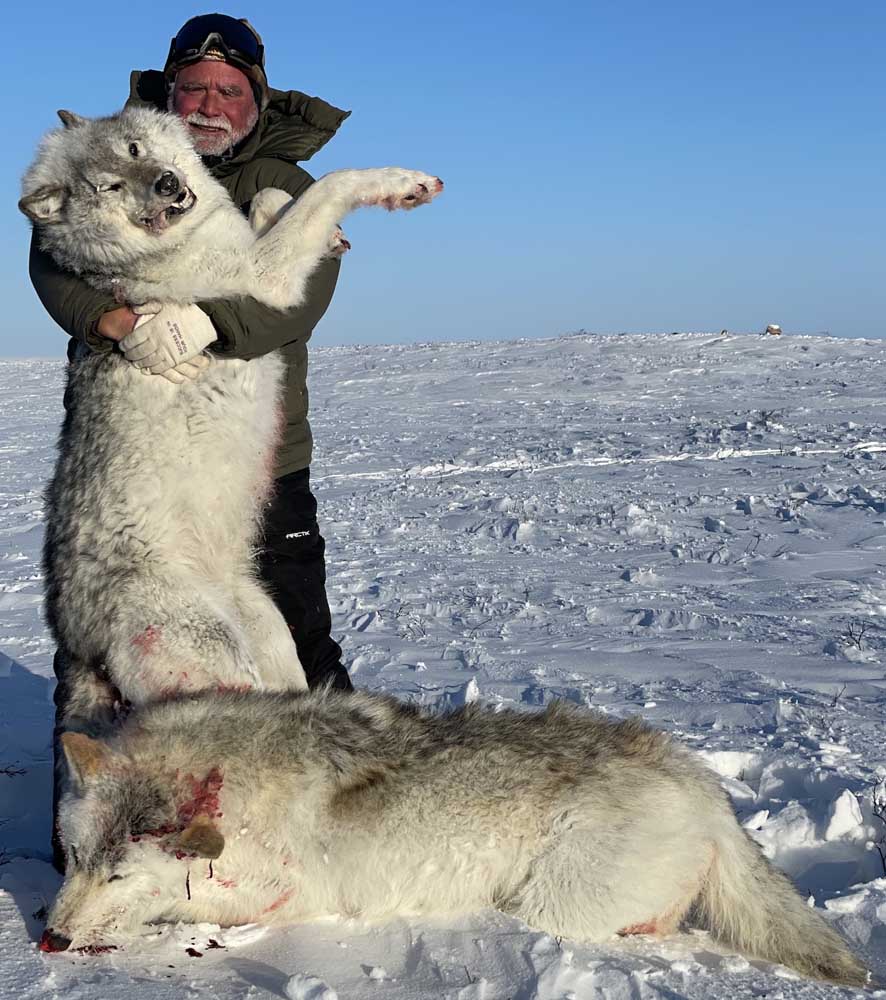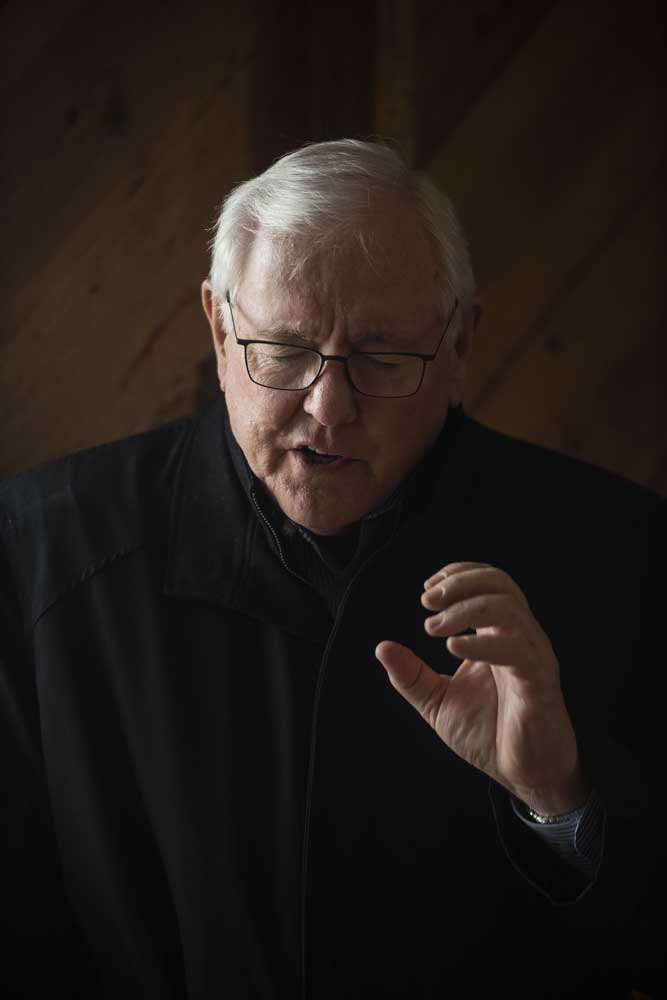North By Northwest: Arctic wolf hunt results in an adventure for Texan
Published 11:33 pm Thursday, April 20, 2023

- Leaving 80-degree temperatures in Texas, Ryder Lee dealt with wind, snow and temperatures dipping to minus 27 to take a pair of wolves 150 miles south of the Arctic Circle in the Northwest Territories.
There are hunts and then there are adventures where the hunt is just one part of the whole.
For Texan Ryder Lee, a March trip 150 miles south of the Arctic Circle in Canada’s Northwest Territories to hunt wolves was an experience he will never forget.
“I go hunting somewhere every year and to this day that was my greatest adventure. It was just things you are not going to see anywhere else,” said the Coleman County rancher/businessman.
Although hunting wolves has always been on Lee’s list of to-dos, this hunt came much quicker than expected. His hunting companion, Blake Elms of Cleburne, contacted Canadian outfitter Wingmaster Outfitter about information for a future hunt only to find two cancellations 30 minutes earlier left a schedule opening this year. The two quickly jumped on the opportunity.
After a day’s travel from Abilene to DFW to Vancouver to Yellowknife, the last major outpost before the Arctic, the hunters met guide Kyler Knelson the next morning for a quick stop for snowmobile parts and then began what was initially described as a couple hours drive north.
“We got on the Ice Road that is on that show Ice Road Truckers. They pulled us over at the entrance and tried to talk us out of going because there was supposed to be some high winds and heavy snow. The wind blows 50 miles per hour up there and snow drifts real bad. (The guide) said we were fully prepared to be snowed in and wanted to be on the other end of the road when it clears because the hunting is going to be good,” Lee said.
And so the drive began. Three hours, four hours then five passed and there was no sign of slowing down.
“Five hours into it, I asked him how far to the end. He said he didn’t know because he had never timed it. Nine hours later we were there. I am assuming it was about 300 miles,” Lee said.
“There” was a trailer. Not a travel trailer that could not stand up to the harsh winter conditions, but a foamed wall commercial trailer with room to hold two snowmobiles and a cozy 7-foot by 12-foot living area for two hunters and two guides. Lee would learn that for the duration of the hunt, wherever they went the rig went with them.
Wolf hunting is controversial in the United States where efforts to rebuild the population are still relatively new. In a desolate location so close to the Arctic in the Northwest Territories, wolf numbers are so high they are a detriment to other species. Knelson told Lee that a single wolf needs the meat equivalent of 25 caribou a year just to sustain itself. With caribou numbers in province declining, many see a direct relationship between the two.
The problem is so apparent, local residents are issued 10 tags at a time and can come back for more. Local Inuit tribes can hunt them without limits while out-of-province hunters are limited to two annually.
The hunt is from snowmobile. Because of the weather, the party will drive area roads until finding caribou or wolf tracks, unload both machines and take off in search of the wolves. Because snow or winds can quickly conceal tracks, anytime they are spotted they are fresh.
“When you are hunting wolves, you are really hunting caribou. When you find a herd of caribou, there are going to be wolves around,” Lee explained.
Although Elms was the first hunter up, Lee quickly learned how brutal the hunt conditions could be.
“The first day there was 2,000 caribou. They were as far as you could see. The guide said there were wolves here, we just have to find them. We started making a big circle on the snowmobile and he asked how I was doing and I said fine,” Lee said.
A short time later, the guide asked again and Lee said his feet were cold. A third time, it was the same response. On the forth occasion Lee said he was fine, that his feet were not cold anymore.
“He called on the radio and said we have to go to the trailer immediately that my feet were frozen,” the hunter said.
Although he had bought what he thought was sufficient gear for the trip, Lee found himself unprepared for the reality of the conditions. Fortunately, the guide caught the situation in time, and after a quick warming and a swap to a more loose-fitting pair of boots that helped retained heat better, the hunt was back on and Elms was able to tag out the first day.
That afternoon the hunting party made a move closer to mines operating at the end of the road, the reason for its existence.
When Lee left Texas four days earlier, it had been 80 degrees. On the morning in which he was the hunter, it was blue skies and calm, but minus 27. After driving a quarter mile, they saw fresh wolf tracks and scrambled to get the snowmobiles out, and quickly found three wolves on a fresh kill.
“The biggest one ran to the top of a hill. They have boulders on them, but after 2 ½ feet of snow you could only see the tops stick up so you have to go slow,” Lee said.
It was like the wolves knew going up provided them the best chance to escape, and although they can run fast and have stamina, the big animals were getting bogged down breaking the snow’s crust.
They got within 60 yards of the largest wolf and the guide stops the snowmobile and jumps off. Before using the windshield as a rest, Lee has to shed mittens, goggles and face mask to get ready for a shot. For a competition distance shooter like Lee, it was no challenge.
Lee and the guide then took off after another. Racing at speeds of 60 mph and faster, they tracked it more than two miles before Lee hit it on the run at 100 yards.
Although he custom builds rifles, Lee had opted to shoot the outfitters .223 at his recommendation and because of the ease of travel.
“The first kill I can do all day long. The second one, I didn’t know how fast they could run. His belly was about four inches off the ground. I led him 8 inches and hit him right in the ear,” Lee said.
The guide was impressed noting two wolves on two shots is a rare occurrence. Typically it takes hunters about 10 shots to limit out.
But there wasn’t much time to celebrate. It is important to get the wolves skinned before they freeze, and with the two animals 2 ½ miles apart it would be a race, one they eventually lost resulting in getting the second wolf only partially skinned before having to take the entire head with them.
Lee admitted while the second wolf was the oldest in the pack, it was not as big as the others. However, based on the conditions he opted to take it anyway, shortening the two Texans time in the conditions.
“It is probably the best experience I have been on, and I have been on some great hunts. It is an adventure. You are up there and there are no people, and the people that are there are tough as nails,” Lee said, admitting he might go back, eventually.







